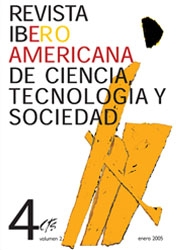The social role of the State University of Campinas (Unicamp)
DOI:
https://doi.org/10.52712/issn.1850-0013-1035Keywords:
technology transfer, higher education, university-industry-government relationships, social impactAbstract
This article deals with the interrelation between public university and technological and economic development, analyzing the case of the Universidade Estadual de Campinas (Unicamp). Created in the middle of the 1960’s, Unicamp was designed to meet the goals of a national plan aimed at achieving Brazil’s modernization. With that end, it contracted high level professors and researchers, and focused its research activities on areas considered as strategic for the country’s development. So, Unicamp established successful links with big state firms from various sectors, whereas it addressed the social needs of its region. The article reviews these processes along the decades of 1970, 1980 and 1990, and argues that the possibilities of success of initiatives such as Unicamp depend on the coordination at the national level of policies aimed at orienting the academic supply toward the demand of R&D of the big firms, as well as toward social investments.
Downloads
References
BRISOLLA, S.N. (1995): “Capacitación Tecnológica y Patrones Tecnológicos: una visión a partir de los países en desarrollo”, en Redes - Revista de Estudios Sociales de la Ciencia, Nº 5, Vol. 2, pp. 35-65.
BRISOLLA, S.N. (1998): “Relação Universidade - Empresa: Como Seria se Fosse”, en Interação universidade empresa, Instituto Brasileiro de Informação em Ciência e Tecnologia (IBICT), con el patrocinio del Instituto Euvaldo Lodi (IEL), pp. 76-98.
BRISOLLA, S.N. (2001): “Indicadores de Innovación: los siete pecados capitales”, en M. Albornoz (comp.), Temas Actuales de Indicadores de Ciencia y Tecnología en América Latina y el Caribe, Buenos Aires, RICYT, pp. 39-57.
BRISOLLA, S.N. y GUEDES PINTO, L.A.C. (1995): “El Instituto de Física de la UNICAMP y el desarrollo de la telefonía en el Brasil: un caso de articulación eficaz de intereses”, en H. Vessuri, La academia productiva - Relaciones de científicos académicos con clientes externos, Caracas, Fondo Editorial FINTEC, pp. 41-63.
CASTRO, C.M. (2004): “P&D: P fácil e D difícil”, Revista Veja, octubre, p. 82.
ETZKOWITZ, H. y BRISOLLA, S.N. (1999): “Failure and Success: The Fate of Industrial Policy in Latin America and South East Asia”, Research Policy, 28 (4), pp. 337-350.
FAPESP(2002): Indicadores de Ciência, Tecnologia e Inovação em São Paulo, 2001, coordinación general de Francisco Romeu Landi, São Paulo, Capital, Fundação de Apoio à Pesquisa do Estado de São Paulo (Fapesp).
MARINHO, M.G. (2001): Norte-americanos no Brasil: uma história da Fundação Rockefeller na Universidade de São Paulo, Campinas, Autores Associados.
NIGHTINGALE, P. y MARTIN, P. (2004): “The mith of the biotech revolution”, en Trends in Biotechnology, N°11, Vol. 22, noviembre.
NOBLE, D.F. (1982): America by Design, New York, Alfred A. Knopf (1ª edición: 1977).
NSB, National Science Board (2004): Science and Engineering Indicators, 2004, Arlington, Virginia, National Science Foundation.
VEJA (2004): Edição Especial no 36º Agronegócio e Exportação, año 37 (Revista Veja 1877), octubre.
Downloads
Published
How to Cite
Issue
Section
License
Copyright (c) 2025 CC Attribution 4.0

This work is licensed under a Creative Commons Attribution 4.0 International License.
All CTS's issues and academic articles are under a CC-BY license.
Since 2007, CTS has provided open and free access to all its contents, including the complete archive of its quarterly edition and the different products presented in its electronic platform. This decision is based on the belief that offering free access to published materials helps to build a greater and better exchange of knowledge.
In turn, for the quarterly edition, CTS allows institutional and thematic repositories, as well as personal web pages, to self-archive articles in their post-print or editorial version, immediately after the publication of the final version of each issue and under the condition that a link to the original source will be incorporated into the self-archive.











